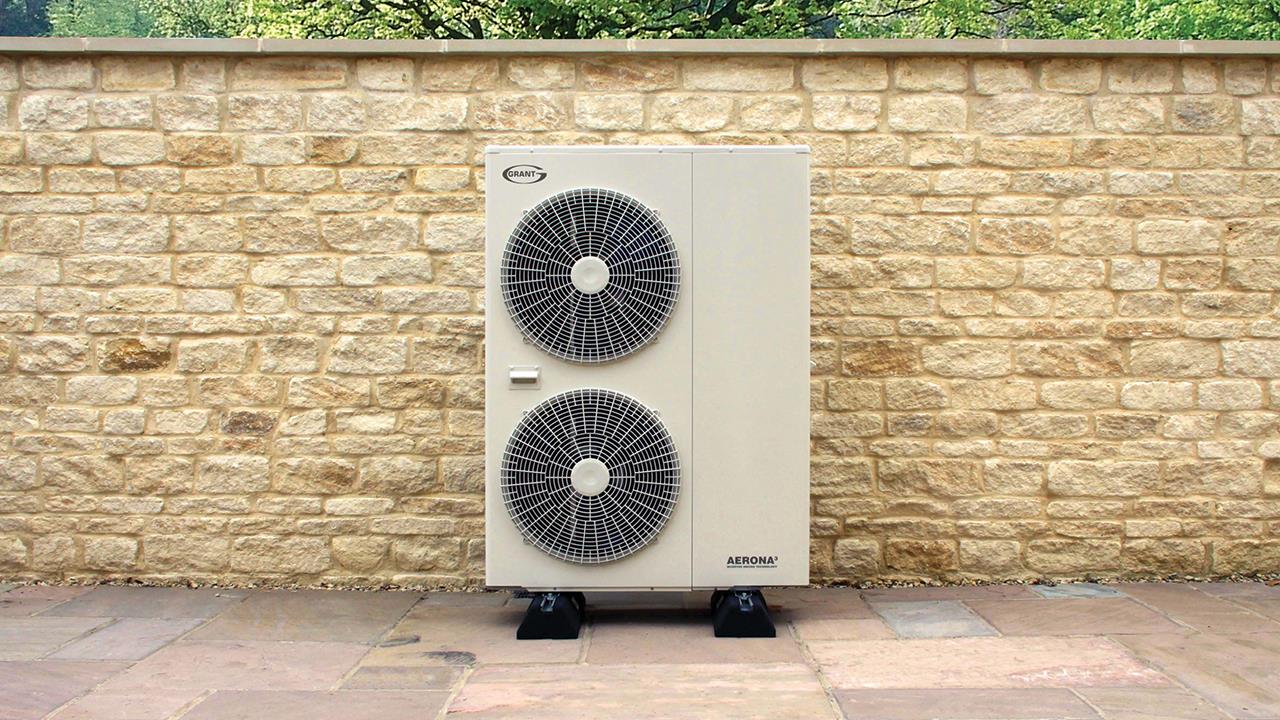


Richard Harvey, Category Director for Heating at Wolseley, profiles three environmentally-friendly ways in which tradespeople can diversify their customer offering.
Undoubtedly, the world is changing, and so are the ways homes are supplied with water and heating. Getting ahead of the curve in terms of trends and the skills required to install outdoor heating and water supply systems could be a real revenue booster for plumbing and heating businesses.
Full of hot air
Domestically, air source heat pumps (ASHPs) are becoming a popular replacement for traditional boilers. More commonly used in commercial buildings, air source heat pumps, or air-to-water heat pumps as they are sometimes known, work by generating energy from the outside air. In contrast to a refrigerator, these pumps take heat from the ambient air and supply it to the home.
The air is drawn into the unit and transferred to a heat exchanger using a fan where it is then turned into a vapour via a circulating refrigerant – even at low temperatures. The steam produced by the refrigerant is then compressed to a level where it can be used for heating homes and supplying hot water.
Modern ASHPs have highly efficient designs and, despite criticisms of their ability to heat homes when outside temperatures are low, can generate heat when temperatures dip as low as -15°C.
Well-grounded
Unlike ASHPs, ground source heat pumps (GSHPs) extract heat from…yes, you guessed it!
Because temperatures below the ground are warmer than the outside air, and remain at a stable temperature all year round, GSHPs are considered more efficient and more practical than air source counterparts. They also generate less noise.
In terms of operation, heat is extracted through water pipes that lie around 2m below the ground. Pipework usually sits in horizontal trenches in a homeowner’s garden but, where space is at a minimum, can lay in vertical pits. The groundwork required for vertical boreholes is usually more complex and can be more expensive for the customer.
As an installer, it’s important to consider the size of the building when determining the size of the ground loop in order to match the heating load of the home. Other factors such as shading, material choice, and the location of the ground loop can affect the system’s efficiency, so it is important that your customer employs a thermal modelling specialist to determine the prime locality, size, and specification of the ground loop.
Overall, ground source heat pumps can be an excellent way for customers to switch from conventional gas or electric heating and reduce their bills. With some systems producing no carbon emissions and using no gas or electricity at all, customers can typically expect a 12% return on investment year-on-year. This is also propped up by the government’s Renewable Heat Incentive, which pays users with a healthy cashback subsidy of 20.89p per kWh used for the first seven years of installing a GSHP.
Recycle and reuse
Homeowners are also beginning to realise the environmental benefits of recycling rainwater. Most people currently use treated potable water for tasks like watering gardens, washing clothes, and flushing toilets, but why? With the UK being one of the wettest countries in Europe, there is a great opportunity for homeowners to harvest the drizzle from their roofs, save up to 50% on their water bills, and play their part in preventing water shortages. Installing a rainwater harvesting system is relatively simple and, despite requiring some assistance from other trades such as groundworkers, some can be fitted in as little as one day.
Anybody installing rainwater harvesting systems will need to be familiar with the UK Water Regulations for rainwater, as there are stringent rules in place to make sure the mains supply isn’t contaminated.
As most won’t want the tank to be visible, the job will usually begin with a contractor excavating the area for the tank to sit in. The size of the system and storage tank will also have to be evaluated in accordance with BS 8515, the British Standard for Rainwater Harvesting.
Once the tank is installed, manufacturer guidelines are usually simple to follow in terms of connecting the downpipes from the roof, overflow pipes, and outlet pipes to supply water into the home. Most systems will also include a sensor to measure the height of the water in the tank, so that the connecting control unit can switch over to the mains water supply when necessary.
When fitting a control unit, it’s important to ensure it is always accessible to the homeowner in the event of future maintenance requirements. After installation, it’s important that all pipes and valves are marked up in accordance with the UK Water Regulations for reused water.
Extending experience
As heating and water sources begin to change, experienced installers would be well placed to add outdoor systems such as rainwater harvesting systems, GSHPs, and AHSPs to their list of available services.
Environmental awareness is showing no signs of slowing down, so learning the skills required for outdoor installations before they become mainstream could be a worthy investment – not to mention a great excuse to get outside when the sun is shining
If you'd like to keep up-to-date with the latest developments in the heating and plumbing industry, why not subscribe to our weekly newsletters? Just click the button below and you can ensure all the latest industry news and new product information lands in your inbox every week.